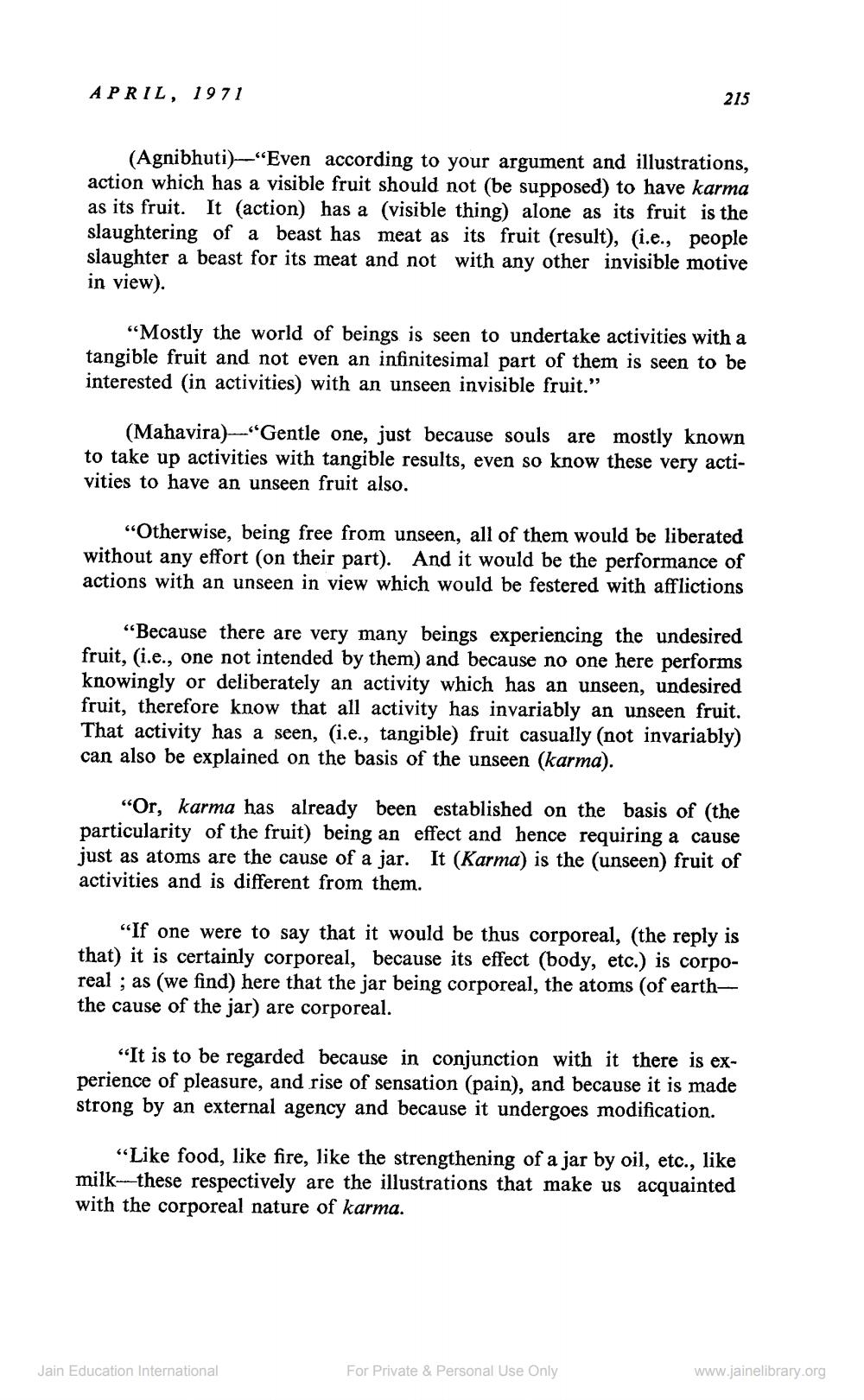________________
APRIL, 1971
215
(Agnibhuti)--"Even according to your argument and illustrations, action which has a visible fruit should not be supposed) to have karma as its fruit. It (action) has a (visible thing) alone as its fruit is the slaughtering of a beast has meat as its fruit (result), (i.e., people slaughter a beast for its meat and not with any other invisible motive in view).
"Mostly the world of beings is seen to undertake activities with a tangible fruit and not even an infinitesimal part of them is seen to be interested in activities) with an unseen invisible fruit."
(Mahavira)-"Gentle one, just because souls are mostly known to take up activities with tangible results, even so know these very activities to have an unseen fruit also.
“Otherwise, being free from unseen, all of them would be liberated without any effort (on their part). And it would be the performance of actions with an unseen in view which would be festered with afflictions
“Because there are very many beings experiencing the undesired fruit, (i.e., one not intended by them) and because no one here performs knowingly or deliberately an activity which has an unseen, undesired fruit, therefore know that all activity has invariably an unseen fruit. That activity has a seen, (i.e., tangible) fruit casually (not invariably) can also be explained on the basis of the unseen (karma).
"Or, karma has already been established on the basis of (the particularity of the fruit) being an effect and bence requiring a cause just as atoms are the cause of a jar. It (Karma) is the (unseen) fruit of activities and is different from them.
"If one were to say that it would be thus corporeal, (the reply is that) it is certainly corporeal, because its effect (body, etc.) is corporeal ; as (we find) here that the jar being corporeal, the atoms (of earththe cause of the jar) are corporeal.
"It is to be regarded because in conjunction with it there is experience of pleasure, and rise of sensation (pain), and because it is made strong by an external agency and because it undergoes modification.
“Like food, like fire, like the strengthening of a jar by oil, etc., like milk--these respectively are the illustrations that make us acquainted with the corporeal nature of karma.
Jain Education International
For Private & Personal Use Only
www.jainelibrary.org




